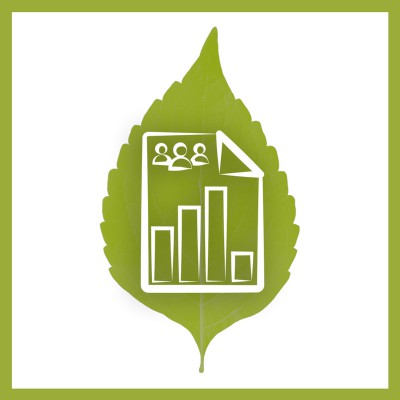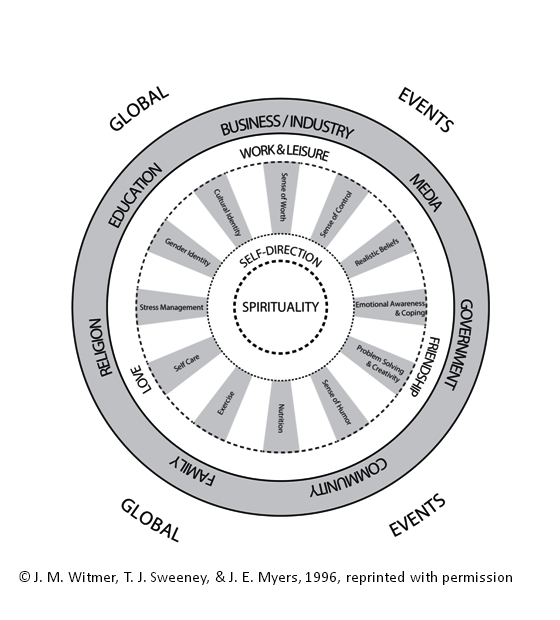Wellness Evaluation of Lifestyle
Authors: Jane E. Myers, Thomas J. Sweeney, & Melvin Witmer
The purpose of the Wellness Evaluation of Lifestyle (WEL) is to help respondents make healthy lifestyle choices based on their responses to each of the five life tasks and subtasks defined in the Wheel of Wellness. The life tasks of spirituality, self-direction, work & leisure, friendship, and love interact with a variety of life forces and global events. The instrument consists of 131 items generated as self-statements to which respondents reply using a five-point Likert scale.
Sweeney and Witmer (1991) presented a holistic model for wellness and prevention across the lifespan which is based in psychological theory and empirical research on characteristics of healthy persons. Eighteen characteristics were identified and presented in a circular model, the Wheel of Wellness, to symbolize a pattern of relationships among these characteristics.
The Wellness Evaluation of Lifestyle or WEL Inventory was developed to measure each of the components of wellness depicted in the Wheel. It is based on the major life tasks and subtasks that enable healthy persons to interact effectively with environment and ecological life forces. In the WEL, one score is provided for each of the life tasks and sub-tasks, as well as a composite score for “total wellness.” Scores are presented in a profile that allows for interpretation based on individual scores as well as patterns. The WEL can be used as an adjunct to counseling to help people develop and maintain healthy lifestyles that promote well being over the lifespan, quality of life, and longevity.
Copyright © 2001 by Jane E. Myers

 SEARCH
SEARCH LOGIN
LOGIN  BLOG
BLOG
 CART
CART






